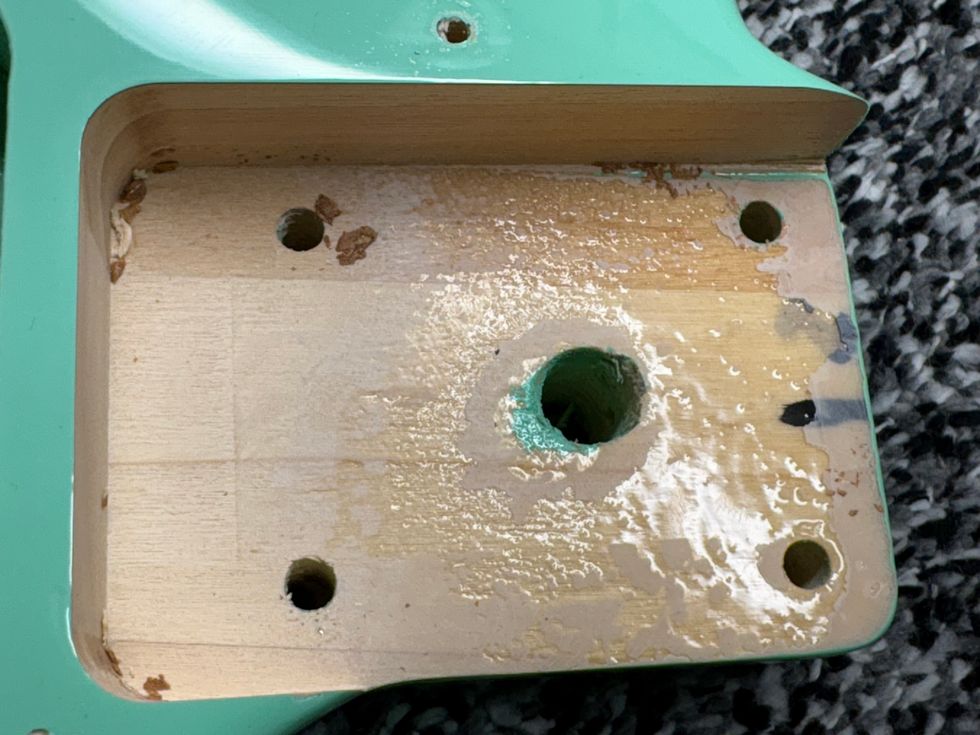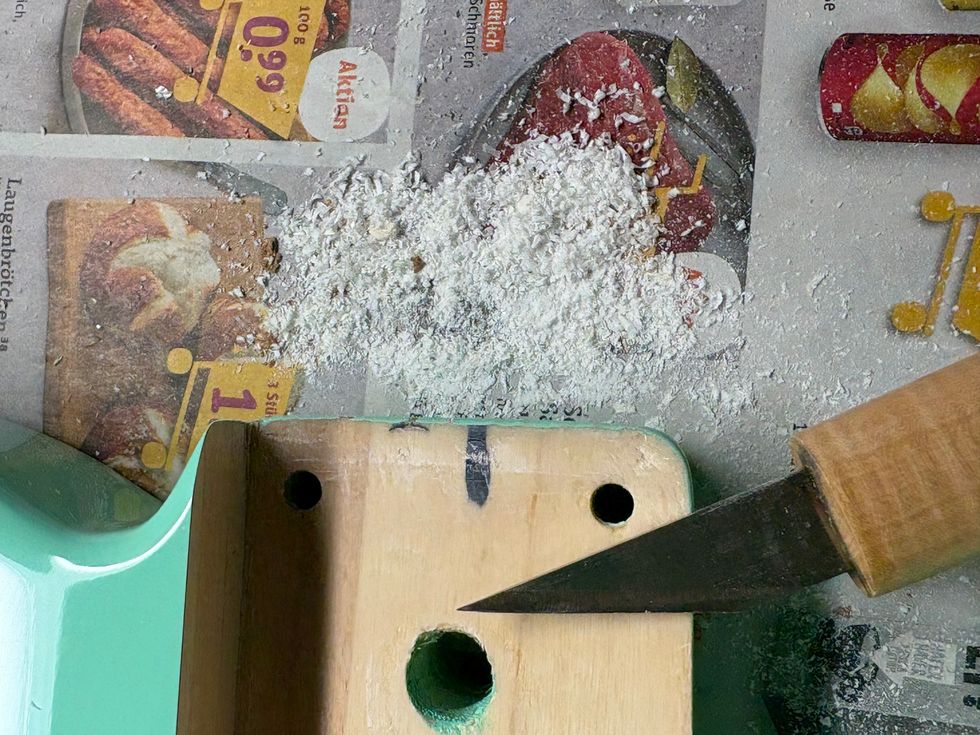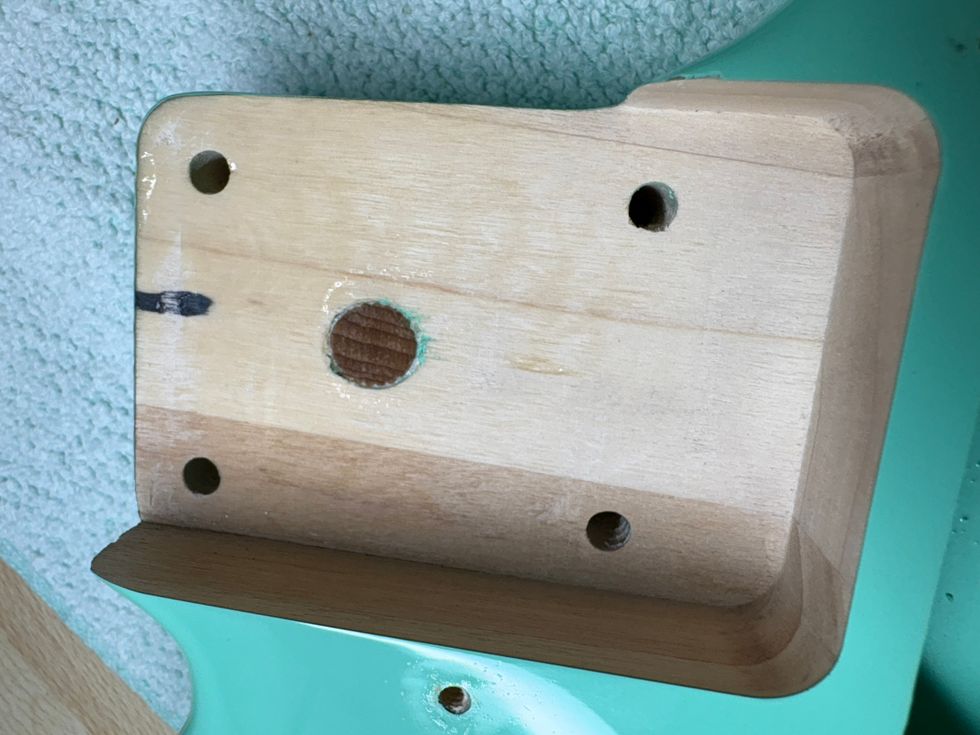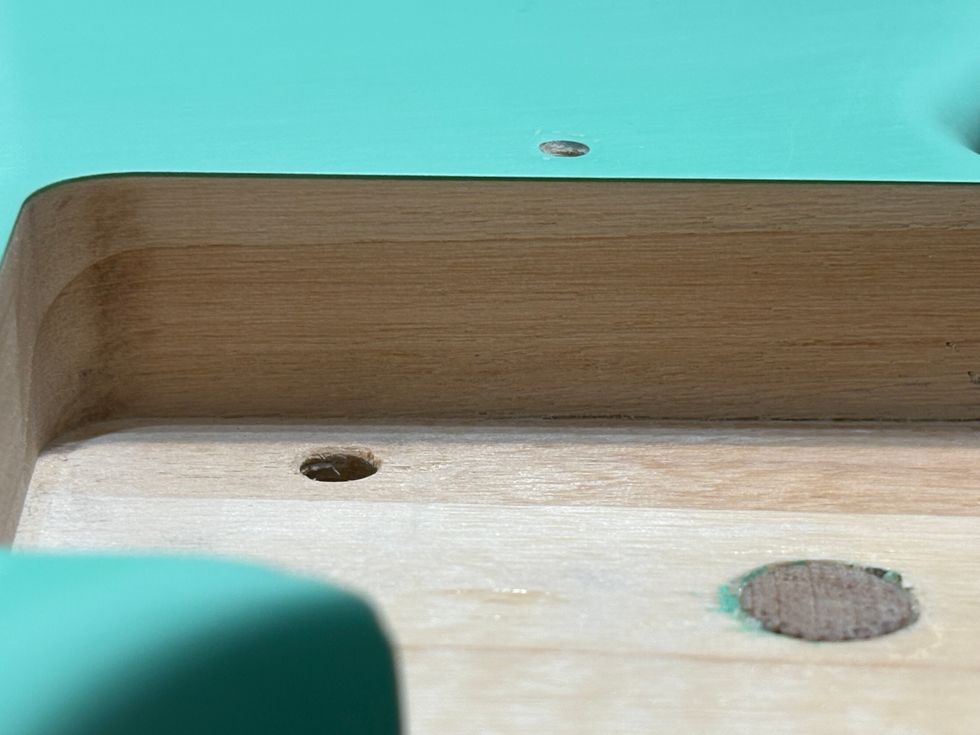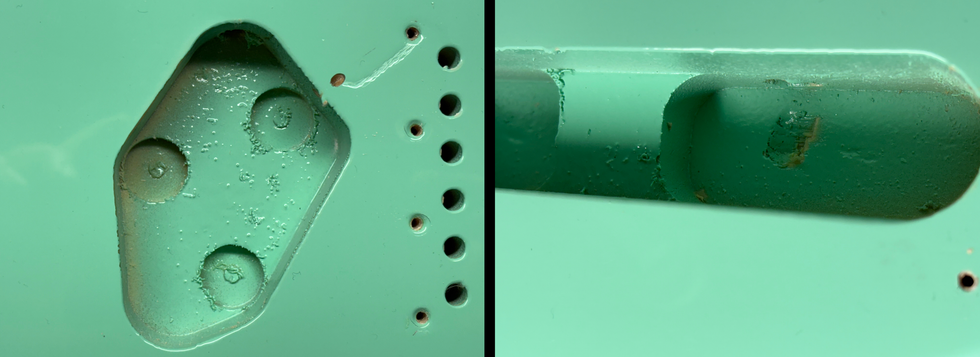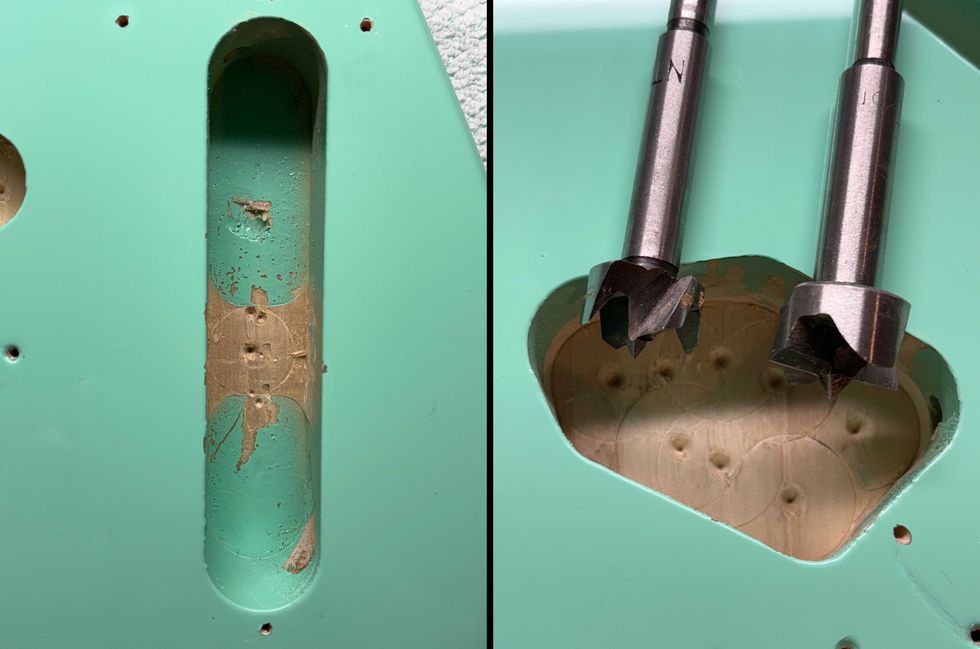In the last months, we''ve talked a lot about tone caps and wiring. Now it''s time to apply all of this info inside of your axes. If you already use your tone pots, but the tone gets very dark when closing it, you know now that the cap is simply too big. Normally Fender and Gibson guitars are equipped with a .022uF or .047uF tone cap. For most players, including myself, this is way too much. Simply replace the cap with one of a lower value, as discussed in previous columns, and you are done. This is a very simple, yet highly effective way of changing the tone of your guitar and enhancing the function of your tone control. You can go down as far as 1000pF with good results; my personal favorite value inside most guitars is 3300pF. With this value you can dial in a lot of tone colors and the tone will always be defined. And as you know, this is a wide field to experiment with.
If you want to be even more flexible, you can replace one or all tone pots with a rotary selector switch equipped with different cap values to dial in. You can use everything you have learned in the last few months here, and experiment with different tone caps and different values. This is not a new idea; Gibson used a similar system in the fifties, and today products like the Stellartone "Tone Styler" (stellartone.com) are available as ready-to-drop-in solutions. The Tone Styler is a very well-made product, and is highly recommended if you don''t want to build one yourself. It''s a good idea (depending on the switch) to use a 10M resistor in parallel with each cap to avoid loud popping noises when using the switch. This will make your guitar very flexible, and you can imitate a wide range of pickups. The shown values are only recommendations, -- you can alter them in any way you want. Feel free to experiment with different values and different types of caps, and as always, let your ears decide! 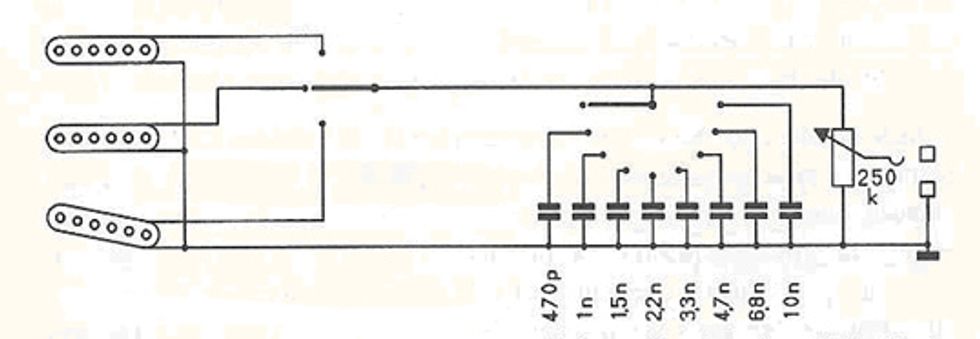
If you want to go one step further and add an on/off switch (SPST) with two resistors like shown in the next drawing, you will get a kind of two-dimensional tone control for your guitar. The rotary switch with the caps stays the same, and the new switch will give you the possibility to influence the resonance peak of each setting. With the switch open you will have the full resonance peak and a bright sound; with the switch closed the resonance peak will smooth out by cutting the peak frequencies a little bit. Your overall sound will get warmer and loose any penetrating character. This works very similar to the "Sweet Switch" that PRS used for a long time to simulate the influence of a very long cable between the guitar and the amp. The shown values of the resistors (6,8k and 150k) are non-critical; they will work very well in that combination, but you can change them if you want to. You can also use different types of resistors like metal film or carbon composite to further influence the sound.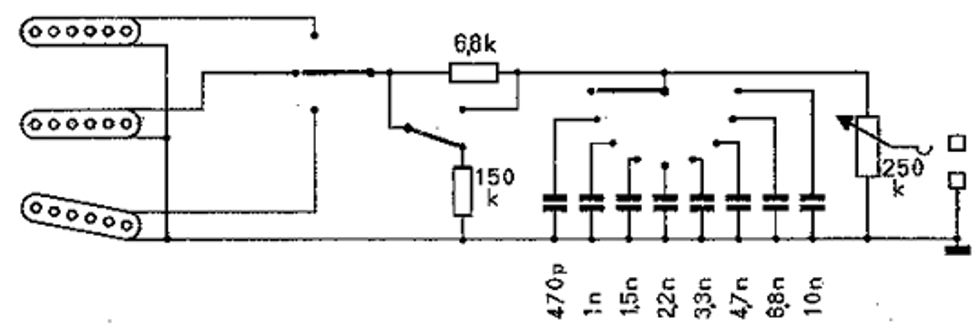
Feel free to use these basics and go wild. You can add more switches to choose between different types of caps and resistors, rotary switches for more than eight cap values, or add an additional pot after this complete structure to have even more control about each individual cap that is dialed in (see circuit below).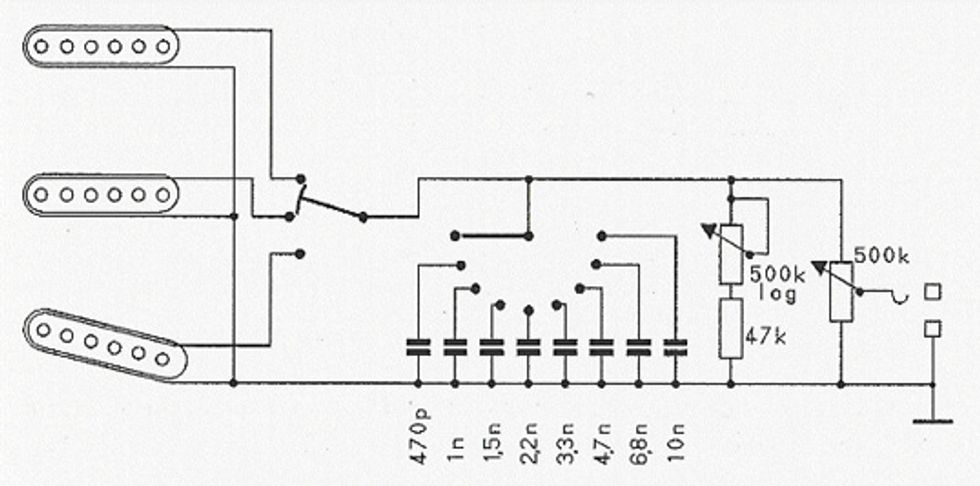
Dirk Wacker has been addicted to all kinds of guitars since the age of five and is fascinated by anything that has something to do with old Fender guitars and amps. He hates short scales and Telecaster neck pickups, but loves twang. In his spare time he plays country, rockabilly, surf and Nashville styles in several bands, works as a studio musician and writes for several guitar mags. He is also a hardcore DIY guy for guitars, amps and stompboxes and also runs an extensive webpage singlecoil.com about these things.














![Rig Rundown: Russian Circles’ Mike Sullivan [2025]](https://www.premierguitar.com/media-library/youtube.jpg?id=62303631&width=1245&height=700&quality=70&coordinates=0%2C0%2C0%2C0)




